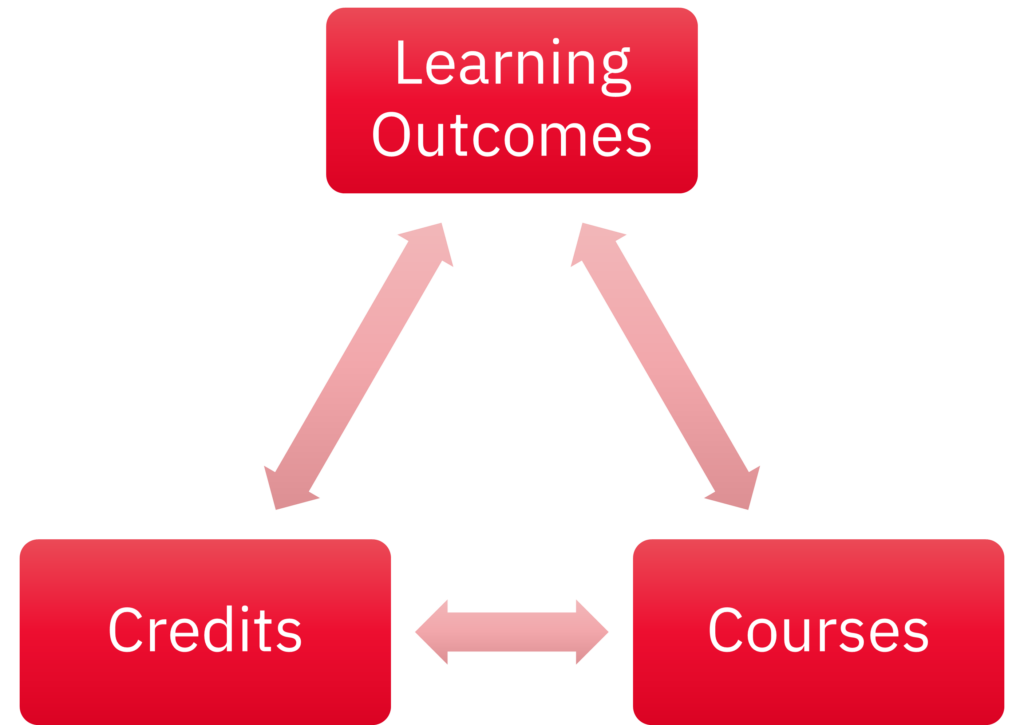How do you turn the vision of your program into curriculum?
When designing curriculum, there are three interlocking elements you need to define (or refine): Learning Outcomes, credit structure, and courses (required and elective).
These elements can be defined independently, but then refined continually and concurrently to ensure they work together. That is:
- Do the Learning Outcomes speak to the courses offered?
- Do the amount of required courses make sense when looking at the credit structure?
- Are you able ensure that courses for all required credits can be offered to all students?
- Are the courses, and their assignments, best suited for meeting and assessing the Program Learning Outcomes?

Support for:
Learning Outcomes
What are the things that students will know, do, and value by the end of the program?
Develop Program Learning Outcomes that will define your program and articulate the end goals of your program.
These should align with Ontario's Degree Level Expectations (DLEs) but not be defined by them. Your Learning Outcomes should be be unique to your program and unique to the experiences that your students will get at York.
Courses
Which courses will be the anchor courses that all students in your program will take?
Which courses will be core for all students? What are the courses that students can choose from as electives? What are the content, skills, and experiences that will be offered to the students in your program?
How do these courses and experiences support the fulfillment of your Program Learning Outcomes? What are the assignments in these courses that will assess whether students are progressing in meeting these Outcomes?
Credits
How many credits will make up your program?
Will you be offering a 120 credit degree (Honours), a 90 credit degree (general), and/or a 30 credit minor?
How many required courses will your program have? How many electives? Is something like a "stream" appropriate for your program (best for large programs) or would more informal thematic clusters be useful?
To assist in writing your Program Learning Outcomes see:
To assist in identifying course elements see:
To assist in identifying the credit requirements for undergraduate degrees see:
Ensure you are checking through these elements when you define another. Map your curriculum to show the relationship between these elements. See our Resources page for templates to map your curriculum.
Tips
- Keep it simple. Don't confuse a complicated curricular structure with complexity of ideas in your program.
- Develop community as well as knowledge. Provide spaces in each year for students to come together to review and extend central program components. A spine of required courses can do this, along with keystone and capstone experiences at the beginning and end of your program.
- Are you holding on too tightly tradition when developing your curriculum? What do students need now to use knowledge and skills from your program in the future? Don't hold onto the past just because it is familiar. Think broadly about what the future needs from your program.

Interested in renewing or innovating your curriculum?
Explore our resources or contact our Program and Curriculum Development Specialist for support.
